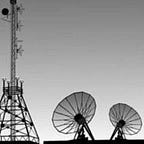Iran’s Homegrown Oil Tankers
Despite erroneous media reports suggesting Iran delivered its first Aframax tanker to Venezuela’s PDVSA in October 2012, the tanker could still be observed at Sadra’s Bushehr-based shipyard in May 2013
Satellite imagery is a great way to provide confirmation of events.With Iran attempting to skirt sanctions by reflagging its current tankers, knowing what additional ships Iran may be adding to its fleet could be imperative for sanctions to work. In order to find that out, you need to know what Iran’s shipyards are capable of producing.
Imagery from Digital Globe from May 27, 2013 shows the recently produced Sorocaima, the first of four Aframax vessels to be constructed for Venezuela, still located at Sadra’s dry dock.
While the ship had yet to be delivered in late May, imagery suggests the Sorocaima would possibly soon depart as the next tanker’s keel, shown in sections above, had been brought out to the drydock.
The latest reporting from the Shipbuilding Tribune says that the tanker was launched on July 22 and that “[c]onstruction works on the second Aframax are in full swing”—although it’s not entirely clear at this point if “launched” means underway to Venezuela or for testing. With erroneous media reporting noted in the past, observers may have to wait until the next batch of satellite imagery to find out.
With Sadra now sporting the Middle East’s largest crane, the shipyard expects a 50 percent decrease in shipbuilding time for the next vessel. Hopefully that may make up for the additional time and costs of the present boat which saw prices rise an additional $6.6 million, putting Iran’s Aframax well above spot market prices.
That said, Iran only obtained the additional expertise required to build the Aframax after a recent hire of South Korean consultants, reportedly some of the best in the industry. It will take time and additional orders for Iran to create the economies of scale in order to make such tankers more competitive.
In case you missed it, Iran reportedly launched another first, it’s first locally manufactured tanker constructed by the ISOICO shipyard near Bander Abbas. The tanker measures 178 meters, is capable of carrying 256,000 barrels of oil, and costs around $30 million. (However, it pales in comparison to the more efficient Aframax which measures 250 meters, is capable of carrying up to 750,000 barrels of oil, and costs around $68.8 million.)
According to imagery, the tanker has been under construction since at least 2009, possibly earlier, suggesting Iran lacked the knowledge to complete the vessel until getting outside help. It seems logical that the assistance Iran received to construct the Aframax tanker may have been instrumental in finishing this order for the National Iranian Tanker Company.
Despite recent reporting indicating the vessel would be delivered in March 2013, as you can see above, the deck house had yet to be fitted. For most yards, it typically takes about sixteen months to complete an oil tanker of this size.
Though for Iran, ship building is a strategic industry and according to Iran’s Industrial Development and Renovation Organization — which invests widely in Iran’s top industries — the shipping industry is its number one investment priority.
As a result, budget and planning timelines may hold less relevance for the final product than does moving up the value chain in ship fabrication capabilities. With buyers like Venezuela, another black sheep of the international community, pledging support for Iranian industries, Iran may have the necessary market to create the economies of scale for efficient manufacturing.
All things considered, these vessels represent a major accomplishment for Iran, as it could soon start producing more of its own tankers, potentially skirting additional sanctions in the process.
